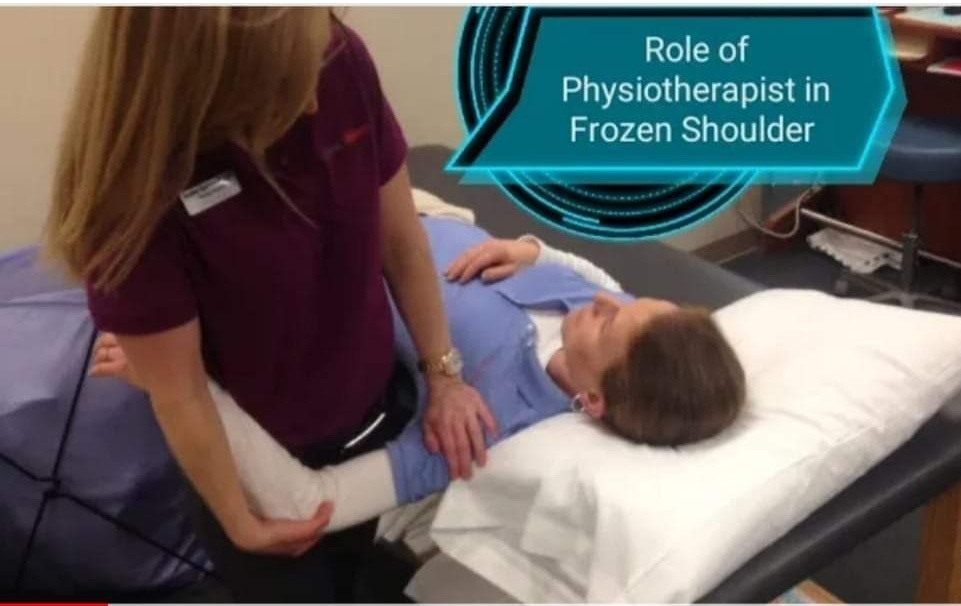
2024-01-11T17:26:29
Physiotherapy clinic in Tambaram Are you Looking for Physiotherapy Treatment in Tambaram, Sunshine Super Speciality Physiotherapy Clinic, We Provide Electrotherapy, Exercise and Manual Therapy, Orthopedic, Neuro, Cardio, Pediatric, Sports and Geriatric Rehabilitation, Post Operative Physiotherapy Treatment, Fracture Rehabilitation, pain free movement. https://youtu.be/sNFbO5C9Zoo *Overview of Shoulder Joint* A frozen shoulder is a condition that affects the joints of your shoulder. It usually involves paina and stiffness that develop gradually, get worse and eventually go away. This can take anywhere from one year to 3 years. Your shoulder is made up of three bones that make up a combination of ball and socket. They are your upper arm (humerus), shoulder blade (scapula), and the collarbone (clavicle). There are also tissues around your shoulder joint that keep everything together. This is called a shoulder capsule. With a frozen shoulder, the capsule becomes so thick and hard that it is difficult to move. Bands form a red tissue and there is a small fluid called synovial fluid to keep the joint lubricated. These things limit the movement too much. *Symptoms* The main symptoms of frozen shoulder pain are stiffness and stiffness that makes it difficult or impossible to move. If you have a frozen shoulder, you may feel a dull or aching pain in one shoulder. You may also feel pain in the shoulder blades that wrap around your arm. You may feel the same feeling in your upper arm. Your pain can be very intense at night, which can make it difficult to sleep. You will usually go through three stages with a frozen shoulder. Each has its own unique symbols and timeline. *Freezing category:* You have pain (sometimes severe) in your shoulder whenever you remove it. It gets worse over time and can be very harmful at night. This can stay anywhere from 6 to 9 months. You are limited in how far you can travel. *Frozen Category:* Your pain may be better but your stiffness gets worse. Moving your shoulder becomes more difficult and more difficult to get through with your daily activities. This stage can last 4-12 months. *Traction Category:* Your movement list begins to return to normal. This can take anywhere from six months to 2 years. *Causes* It is not clear why some people are promoting it, but some groups are at high risk. A frozen shoulder is more common in women than men, and you may have it if you are between 40 and 60 years old. Your risk may also increase if you are still recovering from a medical condition such as a stroke, or surgery such as a mastectomy that keeps you from moving your arm. Certain medical conditions may increase your risk as well. You may also have a chance of getting a frozen shoulder if you have diabetes. About 10% to 20% of people with diabetes get a frozen shoulder. Other medical problems such as heart disease, thyroid disease, or Parkinson’s disease have been linked to frozen shoulder, too. *Diagnosis* To diagnose a frozen shoulder, your doctor will give you a physical examination. They will look at how painful it is and how far it goes. During the “active” part of the test, they will allow you to move your shoulder alone. During the “performance” part, they will pass it on to you, and see the difference. Your doctor may decide that you need an anesthetic injection in your shoulder. This is a painkiller so that they can better judge your idle range of motion. Physical examinations are usually sufficient to diagnose frozen shoulder, but your doctor may also arrange imaging tests such as X-ray, ultrasound, or MRI to rule out other complications such as arthritis or a torn rotator cuff that may cause pain and limit remoteness. how far it goes. *Treatment* Illegal anti-inflammatory drugs (NSAIDs) such as aspirin or ibuprofen can help reduce pain and inflammation in your shoulder. If they do not help you, your doctor may prescribe a powerful drug. Your treatment may also include going to a health professional for strength and stretching exercises to improve your mobility. If your symptoms are severe or do not improve over time, your doctor may recommend other treatments, including: An injection of corticosteroid on your side of the shoulder to reduce your pain and improve your mobility. Integrated segregation. This means that your doctor will put sterile fluid on your shoulder blade Physical therapy. The results with this are mixed and maybe more effective with some sections of the frozen shoulder than others. Surgery. This is rarely necessary to treat frozen shoulder. But if other treatments do not help, your doctor may suggest surgery. It may be an arthroscopic procedure. That means it is done with illuminated, pencil-shaped tools inserted with small cuts on your shoulder. SUNSHINE ® SUPER SPECIALITY PHYSIOTHERAPY CLINIC - #DrParthiban #Sunshinephysioclinic.in #Physiotherapyclinicintambaram DR.M.P. PARTHIBAN.M.P.T (Ortho), Chief Orthopedic Physiotherapist, Call for Appointments: - 9345122177 East Tambaram, CHENNAI

